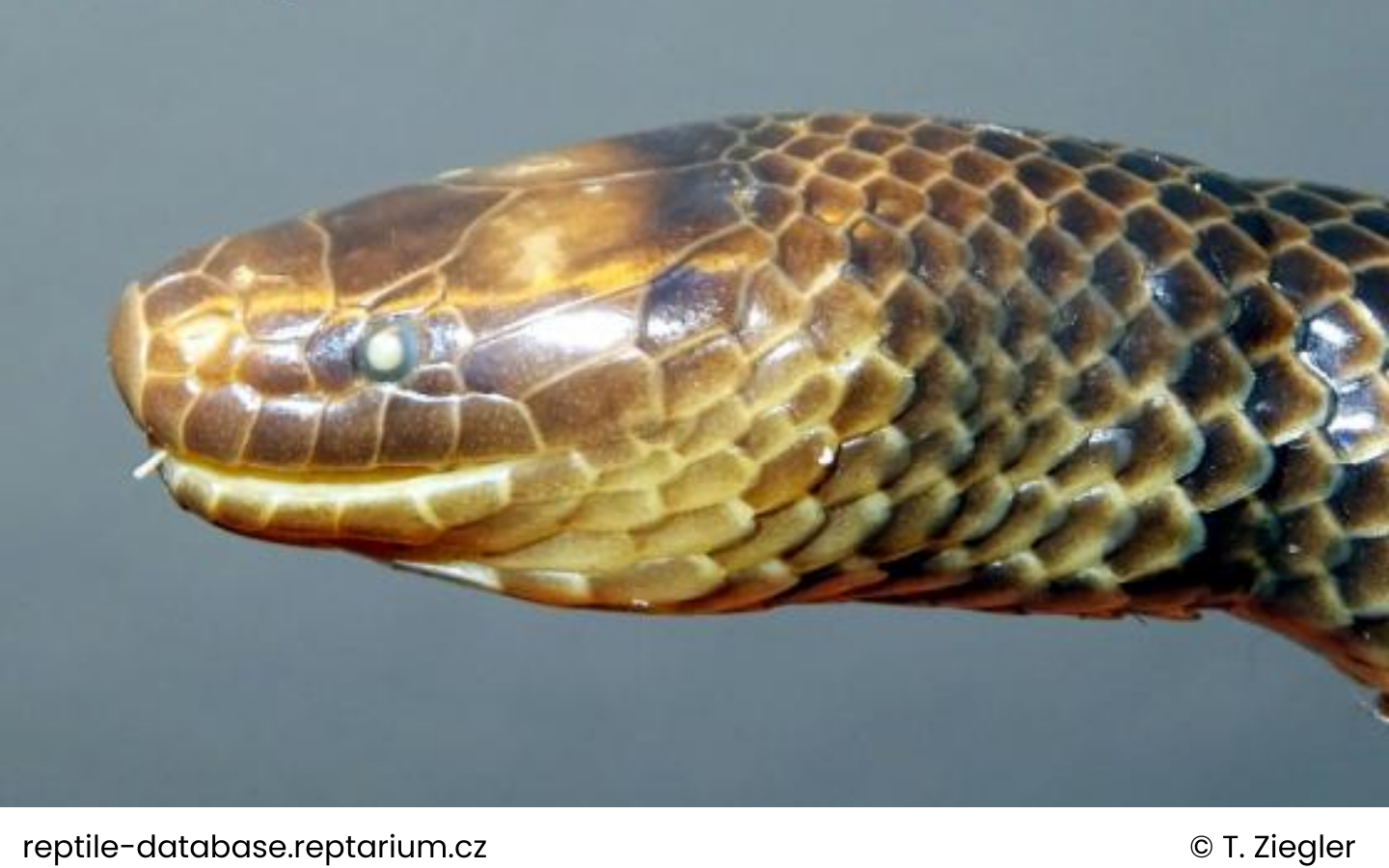
Science name: Opisthotropis voquyi – Ziegler, David, Ziegler, Pham, Nguyen & Le, 2018
Taxonomic: Animalia>> Chordata>> Reptilia>> Squamata >> Colubridae >> voquyi
Species status: Endemic ; IUCN status: LC (Least Concern)
Description:
Physical Characteristics:
Scales: This species has 15 dorsal scale rows at the neck, midbody, and before the vent. The body scales are mostly smooth, though some may exhibit faint keels.
Supralabials: It possesses 7-8 supralabials, with 9 supralabials being a rare occurrence.
Maxillary Teeth: Opisthotropis voquyi has 25 maxillary teeth, indicating its adaptation for catching and consuming small prey.
Subcaudals: The snake has between 74-86 subcaudal scales, a characteristic often associated with semi-aquatic species.
Coloration: The dorsal scales are grey, greyish-brown, or brown in color. In preserved specimens, the posterior scales often have pale greyish-brown edges, which create subtle patterns along the body.
Coloration and Appearance:
The body of Opisthotropis voquyi is primarily grey or brown, with faint markings. The smooth scales provide a sleek appearance, aiding in aquatic movement, while the muted coloration helps the snake blend into its surroundings in streams and forested environments.
Distribution and habitat:
Elevation:
The holotype of Opisthotropis voquyi was collected at an elevation of 437 meters above sea level.
Area:
This species is known from Tay Yen Tu Nature Reserve, located in Bac Giang Province, northern Vietnam. The type locality is situated in a protected area characterized by mountainous terrain and rich biodiversity. The region is part of the lowland to mid-elevation evergreen forest ecosystem, which is influenced by streams and moist forest habitats.
Habitat:
Opisthotropis voquyi inhabits secondary evergreen forests near flowing streams. This species is typically found in moist forest environments, where it has a strong association with freshwater ecosystems such as rivers and streams. Its preference for aquatic habitats is typical of the genus, and it likely spends a significant amount of time foraging or hiding in or near the water.
Behaviour and ecology:
Lifestyle:
Opisthotropis voquyi is nocturnal and spends much of its time in or around flowing streams, similar to other species in its genus. It likely forages at night for aquatic prey such as fishes, tadpoles, shrimp, and earthworms, using the cover of darkness and the water to avoid predators.
Reproduction:
The species is presumed to be oviparous, laying eggs in moist environments near water. However, specific details about its reproductive habits have not yet been documented.
Conservation and status:
IUCN Red List Category and Criteria:
Opisthotropis voquyi has not yet been assessed for the IUCN Red List, and as such, its conservation status remains unclassified. Further studies are required to determine its population size and potential threats.
Population Trend:
There is currently no data on the population trend of Opisthotropis voquyi. Since it is known from a limited number of localities within a protected area, its population could be stable, but further surveys are needed to confirm this.
Threats:
The species may face potential threats from habitat degradation, especially if deforestation or changes to freshwater ecosystems occur in its limited range. However, since it was discovered in a protected nature reserve, these threats may be mitigated by the conservation efforts in the area.
Conservation Actions:
Currently, no specific conservation actions are in place for Opisthotropis voquyi, but the species likely benefits from the protection of its habitat within Tay Yen Tu Nature Reserve. Additional research is necessary to fully understand its ecological needs, population dynamics, and any potential threats.
Etymology
The species is named in honor of Professor Doctor Vo Quy, a pioneering figure in nature conservation in Vietnam. Professor Vo Quy played a significant role in shaping conservation efforts in the country and inspired generations of biologists. He passed away on January 10, 2017, and this species’ name serves as a tribute to his lasting legacy in environmental science.
Crocodile Trail – The Best Birding Trail in Cat Tien National Park
If you’re a birder or nature photographer planning a trip to Vietnam, few places offer [...]
Cong Troi Trail – Top 1 Dalat Plateau Birding Trail Experience
If you’re a birder or nature photographer planning a trip to Vietnam’s Central Highlands, the [...]
How to Identify the Greater Sand Plover, Tibetan Sand Plover and Siberian Sand Plover
Identification Differences within the Sand Plover Complex: The sand plover group, which was traditionally divided [...]
Highlights of Cat Tien National Park Reptiles and Amphibian Endemics
Spanning over 71,350 hectares of tropical forests, grasslands, and wetlands, Cat Tien National Park is [...]
Highlights of Cat Tien National Park Mammals in a World Biosphere Reserve
In addition to reptiles and birds, Cat Tien National Park is also rich in mammals, [...]
Kontum Plateau Endemic and Highlight bird
Kontum Plateau Endemic And Highlight Bird species like Chestnut-eared Laughingthrush and top birding routes while [...]